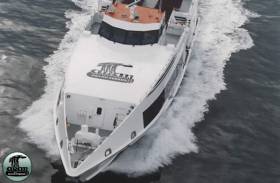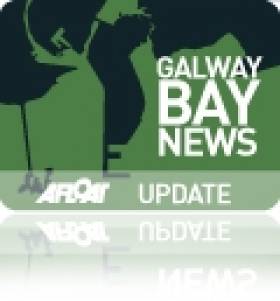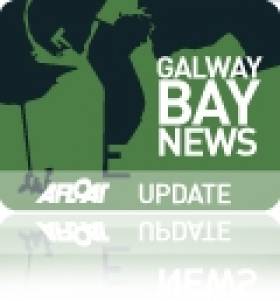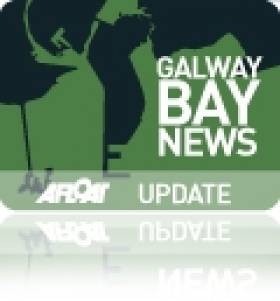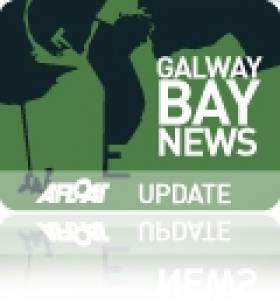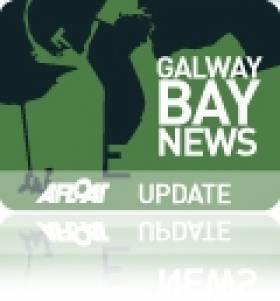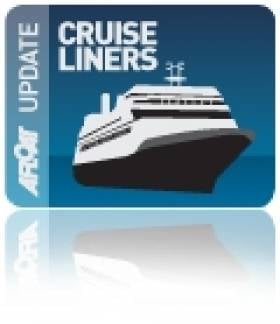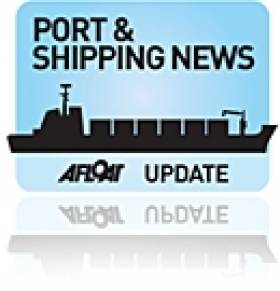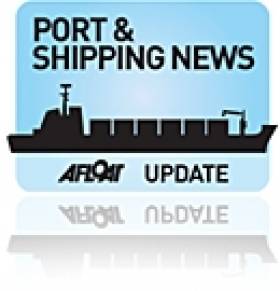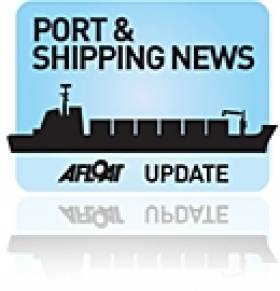Displaying items by tag: Galway Bay News
Further Talks On Ferry Service to Inis Mór Aran Islands
#AranIslands - Talks are to resume on Friday writes Galway Independent in a bid to ensure the continuation of the ferry service to Inis Mór, Aran Islands.
The Island Ferries service ceased last Wednesday and was due to remain out of action until 17 March next year after the family-run company said it “had been left with no further option but to take such drastic action”.
The service however resumed on Friday evening, following talks between the company, Galway County Council and the Department of the Gaeltacht. The service will now remain in place until 4 January 2017, in “a gesture of goodwill to the Islanders”. This date will be kept under review as discussions continue.
Kevin Kelly, Acting Chief Executive of Galway County Council, said the talks, which centre on passenger levies, are complex but there is a “meaningful engagement process in place”.
“We are working as good as we can to conclude this within the timeframe. It is important that there is progress being made and that all parties feel that the overall approach has the possibility of reaching a successful conclusion.”
Galway Port to Repeat Cruise Call Record of Recent Years
#RepeatRecord- Galway Harbour Company are to repeat this year's record of 8 cruise callers for the 2015 season, though the total passenger capacity will be down by more than 1,600 visitors, writes Jehan Ashmore.
Afloat.ie has calculated that the passenger capacity for this year was 6,032 passengers . If all 8 cruiseships are booked to full capacity for the 2015 season, the combined total would reach 4,381 passengers.
Galway Bay will see seven operators in 2015 as Companie du Ponant will be bringing two cruiseships out of the eight cruiseships scheduled in total to visit the mid-west city.
The French operators 264 guest Le Boreal will open the season in May. In design terms she resembles an ultra large megayacht like cruiseship.
Likewise Le Soleal, a sistership is to make an anchorage appearance off the City of the Tribes also that same month, albeit preceded by an interim call by the 264-passenger Amadea.
The Japanese built vessel is marketed for German clientele by operator Phoenix-Reisen.
A fourth and final caller during May will be the visit of Portuguese veteran, Funchal operated by Empresa Insulana de Navegaca.
The remaining four callers are scheduled to visit throughout the season which runs to August.
Biggest Cruise Caller to Galway Harbour Visits Busy Season
#BiggestCaller – Crystal Symphony at 51,044grt is the biggest caller in tonnage terms to Galway Harbour this cruise season, yet her passenger capacity was surpassed by Thompson Spirit which called earlier this summer, writes Jehan Ashmore.
The 922 capacity Crystal Cruises operated vessel marks the sixth caller out of a total eight to include the 1,350 Thompson Spirit in May, making 2014 one of the busiest for Galway Harbour Company in recent years.
The mid-west port has proposed plans for a new port further out in Galway Bay to allow much larger cruiseships to dock. For further details visit their website HERE.
Crystal Symphony this morning anchored off Galway Harbour, close to Mutton Island having made as previously reported another anchorage call yesterday off Mouvile, Co. Donegal close to Greencastle on Lough Foyle.
It may be nearing the end of August, but the season continues as German operator, Phoenix-Reisen makes an appearance next Sunday with their Artania (44,348grt)
The one-time Royal Princess is due at the end of the month with a capacity of 1,260, making her the third largest caller of passengers.
At the other end of the spectrum, Club Med Cruises striking looking five mast sail-assisted Club Med 2 (14,983grt) with only 386 guests is scheduled to end the season in early September.
#HALtenderLINKS - Having anchored off Galway Harbour today, Holland America Line's 800 passenger Prinsendam and her fleet of tenders leave in their wake strong ties with the mid-west port, writes Jehan Ashmore.
At 38,848 tonnes, Prinsendam is the smallest member of the HAL fleet and having started off as Royal Viking Sun as the final ship launched for her original owners Norwegian Viking Line. Since last weekend she has been cruising Irish ports, firstly Dublin and yesterday Killybegs.
As previously reported on Afloat.ie, HAL have a history of regular liner trans-Atlantic calls to Galway Bay. During the careers of their Maasdam and Ryndam this required the use of a dedicated liner tender based in the port, the former Calshot which HAL purchased in 1964 through a subsidiary, Port & Liner Services (Ireland) Ltd.
This saw the 500 plus passenger tender converted from steam to diesel power and renamed Galway Bay. Her classic funnel was also altered and she was repainted in HAL colours during this period as she plied passengers between the liners and Galway Pier.
Also during her Irish career the 700 tonnes tender was chartered to CIE to serve the Aran Islands in the role of a ferry directly from Galway City dock and with a capacity reduced of 400.
She would serve HAL until sold in 1971 to Galway Bay Ferries again continuing the routes between the city to Kilronan, the capital of Inishmore and neighbouring islands of Inishmaan and Inisheer.
Prior to her west of Ireland days, she also served the trans-Atlantic liners in and out of Southampton, having been launched as the Calshot in 1929 at Vosper Thornycroft, Woolston yard for Southampton based Isle of Wight & South of England Royal Mail Steam Packet Company or Red Funnel as it became known.
Her Solent days saw her alongside the famous Cunarder liners Queen Mary and Queen Elizabeth. She also took part in a D-Day role as a headquarter ship at Juno Beach.
Afloat.ie will have more about the Galway Bay which in 1986 returned to original home waters of Southampton in 1986 for preservation and restoration by her current owners, The Tug Tender Calshot Trust.
Plans for New Galway Port Will Have to be Withdrawn
#GALWAY HARBOUR- A proposed €200m outer deepwater port will have to be withdrawn due to a failure by Galway Harbour Company to secure necessary approvals for preliminary investigations, according to a report in yesterday's Irish Times.
The ambitious plan, which intended to build following the success of the stopover of the Volvo Ocean Race in 2009 (and to return next July), was due to have been submitted directly to the planning appeals board some months ago under the Strategic Infrastructure Act.
However, the harbour company was advised that site investigation works for the application were conducted without first securing full approval for a foreshore licence from the Department of the Environment.
Taoiseach Enda Kenny is said to have been informed of the setback, which is expected to delay submission of a planning application to An Bord Pleanála until the mid-2012.
The development proposed transferring port operations outside from the existing single-dock facility (click HERE) south into Galway Bay, where reclaimed land in deeper waters would accommodate larger cruise-ships (click HERE) in addition a freight rail-link and a 200-berth marina.
Three’s A Crowd as Naval, Research and Cargo Ships Dock In Galway
Also sharing the basin but located closer to the dock gates was Arklow Shipping Ltd's Dutch registered dry-cargo vessel Arklow Surf (2000/2,316grt). The dock is capable of handling more vessels simultaneously and of course used as a host-port of the high-profile Volvo Ocean Race which is due to return next year.
Galway and neighbouring Limerick City with its Ted Russell Dock, are the only dock-gate accessed ports on the island of Ireland. In the case of Galway there is an exception as freight operations are also available from an outer pier on the seaward side of Dún Aengus Dock though only for domestic purposes. From this pier the dedicated Aran Islands freight service is operated by Lasta Mara TEO's Blath na Mara (1983/330grt). As for Limerick, vessels can also berth outside the dock but they tend to be small port-work related craft that use the outer berth on the Shannon Estuary.
The Galway Harbour Company in recent years have proposed plans for a new outer port, to be built in four stages with a completion date set for 2017. This would enable larger deeper drafted vessels such as tankers and cruiseships to dock in the new port. In the meantime cruiseships anchor off Mutton Island. In addition a freight rail-link, berthing for an inshore fishing fleet and a 216 berth marina are proposed.
To read more about the port proposals visit http://www.galwayharbour.com/news.php?id=11and for aerial visual impressions click HERE.
- River Shannon
- Marine Institute
- naval service
- Ports and Shipping
- Arklow Shipping Ltd
- Ports and Shipping News
- Aran Islands
- Island News
- Galway Bay News
- Marine Science News
- Dun Aengus Dock
- Galway Harbour Company
- Cruise Liner news
- Cruise ships
- Galway Harbour and Bay news
- Ted Russell Dock
- Marine Instistute Research vessels
- Lasta Mara TEO
Small Luxury Cruiseship Visits Killybegs
In 2004 Killybegs received a significant boost in the completion of a €50m outer harbour with berthing quays totalling 350-metres long so to accommodate the north-west fleet and to include the 'supertrawlers'.
Despite the major port infrastructural investment, Killybegs has seen declining fortunes in the fish industry though in recent year's new business from the offshore exploration and cruise ship industries has assisted in generating new revenue.
Ongoing Ferry Saga As Cargoship is Detained
Harbourmaster Capt. Brian Sheridan, confirmed yesterday evening that the Danish flagged vessel had been detained at lunchtime on the instructions of the admiralty marshal, a High Court judge, acting under maritime law. Until matters are resolved, a ship's keeper has been placed onboard by the Revenue Commissioners.
Cargoship to Attempt Second Ferry-Lift
In the first attempt to load the ferries last week, the Clann na nOileáin fell into the Dun Aengus Dock when the sling rope broke causing the French built 234-passenger craft to fall some 12m /40ft. Onboard the ferry were three people who were taken to hospital but were later released.
Thor Gitta is fitted with two deck-mounted cranes and this feature is also similarly found on the Patanal, which grounded in Casla Bay at the entrance to Rossaveal, nearly a fortnight ago. The German owned 7,002grt was the first vessel chartered to bring the fast-ferries from Rossaveal, but the ferries were subsequently sailed to Galway after the ship was refloated.
The 120m Patanal has undergone "underwater and internal inspections and repairs," according to Capt. Brian Sheridan, harbourmaster of Galway Port Company though he added "that the vessel would remain subject to an inspection by the Marine Survey Office before she can be released".
According to a statement released by the Patanal's owners, Harren & Partner, the vessel is then to be taken to dry dock in Bremerhaven for further repairs.
Since the incident the vessel has been at anchorage off Black Point on the Co. Clare side of Galway Bay where she was monitored initially for pollution and the tug Celtic Isle in attendance. The tug is operated by Celtic Tugs and is normally based in Foynes, Co. Limerick.
Heavy Cargo-Liftship Runs Aground at Rossaveal
Pantanel which is equipped with two deck-mounted cranes was due to lift the 170 tonnes fast ferry sisters Clann Eagle I and Clann na nOileáin. The pair which were owned by Bád Arann Teo (trading as Aran Direct) went into receivership and were sold last month to new owners in Mauritius in the Indian Ocean. For further details click here.
The Antigua Barbuda registered vessel specialises in transporting heavy project cargo around the world. To see a photo of the vessel with boat-cargo onboard click here.


























